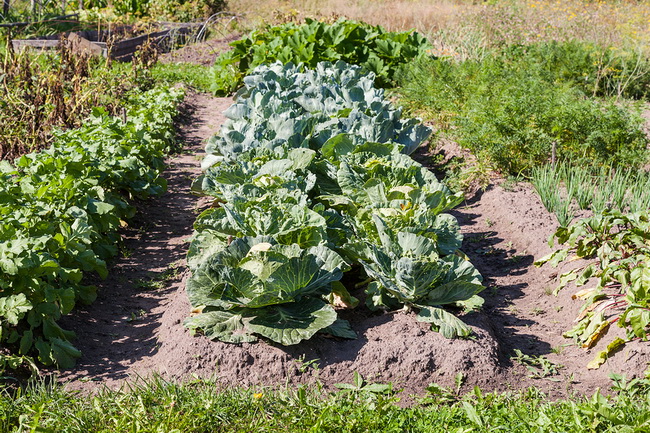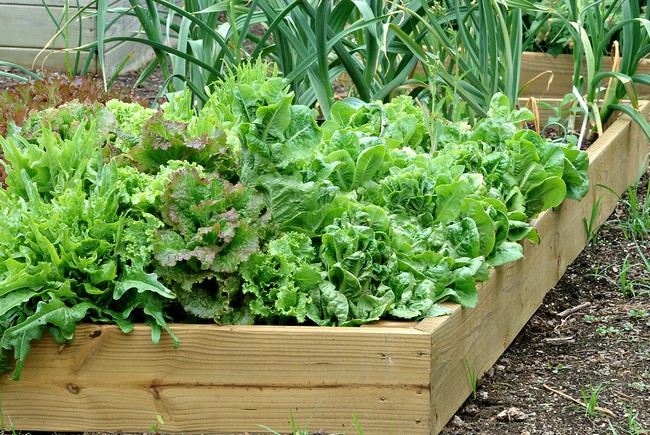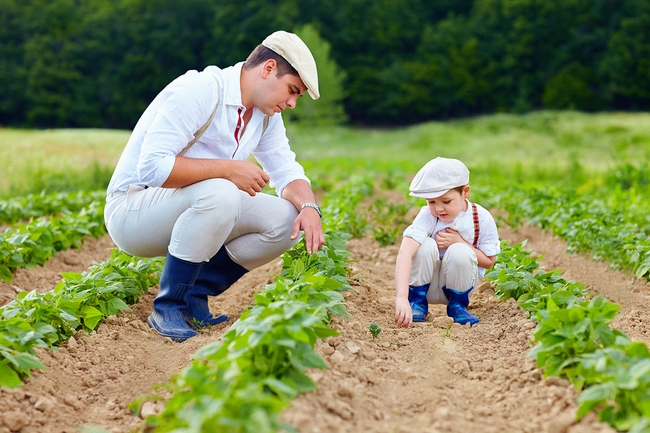- Make It Yourself Lavender Heart-Shaped Bath Bombs!
- 20 Things You Never Knew About “Down There”
- 12 Best Foods For Those Suffering From Arthritis Pain
- 12 Personal Hygiene Mistakes Almost Everyone Makes (Mom Never Told You About #4!)
- 15 Medicinal Plants And Herbs From The Cherokee People
- 12 Mind-Blowing Benefits Of Drinking Coconut Water During Pregnancy
- 12 Outstanding Winter Foods That Won’t Fatten You Up Like A Christmas Turkey
Top 10 High Yield Crops to Plant

Photo credit: bigstock.com
If you are lucky enough to have plenty of yard space, then a good sized garden can provide you with plenty of fresh vegetables and herbs right up until the frost hits. If you practice canning, freezing, or even drying, then you can continue to have garden fresh veggies all winter long.
Unfortunately, many of us aren’t so lucky and have limited space. So why not get the most produce for your seed or seedling dollar? We have a list of 10 of the best vegetables to plant this spring. All are easy to grow, many can be grown vertically (to save on space), and all have super high yields, so you get lots of veggies for the money, not to mention space.
Now this list isn’t meant to be all inclusive. Depending on where you live, some of these plants simply won’t grow (or grow well) in your area and not everyone likes every vegetable. So look through the list and pick out your favorites, and ask at a local garden center which can be grown in your area or do a little research online.
1. Cucumbers
Cucumbers need space to climb, which makes them great in a vertical garden. You can put them right up against a wall, or make a trellis for them to climb up. If you are really tight on space and want to put them in a container, no problem! Buy varieties that say they are compact or “bush” varieties. These vines only spread a few feet. You might also want to think about placing a few onions near or around your cucumber plants as studies show that not only will onions keep soil bacteria and insects away, but they increase the cucumber plants overall yield. No matter how you grow them, you are going to end up with more cukes than you can possibly eat, freeze, or pickle!
2. Squash
If you don’t pay attention to your squash plants, they can overtake your entire garden in one season! This is why squash is a great plant to grow vertically. Squash are one of those super over productive plants that are going to give you tons of squash, no matter which type you want to grow, and there are so many different kinds! Zucchini, summer squash, winter squash, you name it! Your neighbors will be hiding from you after a while because they are afraid you are going to give them yet another bag of squash from your garden!
YOU MIGHT ALSO LIKE: Top 12 Garden Hacks For Your Most Successful Garden Ever!
3. Beans
We don’t mean green beans, we mean black, white, or pinto beans, the kind you can dry and use all year round. These are a staple you will really appreciate later on in the year. In fact, when stored properly, beans can last for years! This is a great way to stretch the family budget and if you are a prepper, you can store your beans almost forever. Depending on the variety you choose, beans can produce about 3 to 5 pounds per 100 square feet! Many beans are natural climbers, so rig up a trellis and let them go to town!
Continue to Page 2

Photo credit: bigstock.com
4. Tomatoes
The old garden stand-by. You can plant grape tomatoes or cherry tomatoes in containers and get tons of them right up until the first frost. These are great for canning or making into sauces for later use. Why pay 4 bucks for a small container of cherry tomatoes when you can buy a plant for a dollar or two, put it in a container and have all the cherry tomatoes you want, fresh and organic, all summer long? Other tomatoes are great in containers as well, just be sure that you water them well in the hottest months. Most tomatoes do need plenty of water and sun, but other than that, these are some of the easiest plants you will ever grow, and you will end up with so many tomatoes, that you might start to feel a bit Italian.
5. Peanuts
Peanuts require lots of hot weather and plenty of water, so these grow best in southern states. However, if you can grow them in your area, peanuts are one of the best crops you can grow in terms of not only yield, but nutritional value. You can get as much as 6 pounds per 100 square feet. Peanuts are high in fat, yet rich in protein and they keep forever. If you are a prepper, these are another good choice. Even if you’re not, imagine having truly fresh roasted peanuts for snacks, making your own peanut butter, or those peanut sauces for Thai food from your own fresh peanuts? Delicious!
6. Leaf Lettuce
Now, these are best grown in areas where it isn’t quite so hot. The cool thing about leaf lettuce is that you can harvest the leaves whenever you like, and more will grow back in their place. You simply need to be certain that you don’t cut the crown. Snip some leaves for your salad, and they will grow back in a matter of days! Some of the best leaf lettuce varieties are Oak Leaf, Mesclun, and Red Sails.
7. Sunflowers
Not only are these pretty plants easy to grow, the seeds are high in healthy fats and proteins. You can get about 2 pounds of sunflower seeds (and that’s a whole lot of seeds!) from just 100 square feet.
Continue to Page 3

Photo credit: bigstock.com
8. Amaranth or Quinoa
These are super easy to grow grains that do not need to be hulled after harvest. Both are much healthier than wheat and are a complete source of protein with all the amino acids necessary to the human body. Amaranth grows best in hot climates while quinoa does much better in cool, wet regions. You can harvest about 5 pounds of these tasty grains from 100 square feet.
9. Collards and Kale
These are both related to the cabbage family and many varieties can even be harvested right up until the winter snow sets in. Both are high in calcium and keep very well in the fridge for months. Read more about kale benefits.
SEE ALSO: Grow Your Own Beauty Product Garden
10. Potatoes and/or Sweet Potatoes
Although these are low in protein, they are staples for many Americans. You can grow any variety of potato you like or sweet potatoes, or both! One of the great things about potatoes is their high yields, about 50 pounds per 100 square feet. They are also super space savers. Most can be grown in an old trash can or a stack of old pallets!
Other plants we haven’t mentioned are:
- Basil, Thyme, and Tarragon – All of these are super easy to grow, they can be dried and stored for years, and they are much, much cheaper to grow yourself than to buy those tiny little bottles for $4 apiece.
- Chilies – If you enjoy chilies or making spicy foods from chilies, you can grow a wide variety of them in pots quite easily. Everything from habaneros to pasillas to jalapenos. They can all be dried (or in jalapenos case, pickled) and stored for months.
- Onions – Although they do take up a great deal of space when you consider the yield, yet many people like to grow them for both the green tops in the summer, and then storing them in the fall. Onions can be kept for months when properly stored, so if you have a bit of room, you might want to think about planting a few onions of every variety.
Perhaps the best way to get the most out of your garden space is careful planning. You can put 64 spring pea plants in a four foot space in your garden in the early spring (since peas like cooler weather), then, when they are finished, replace them with 4 tomato plants (in cages) in the same space, and have more tomatoes than you know what to do with all summer long. Good planning will give you the most yields from your garden, so have your plans ready and as soon as the weather breaks, get planting!
References:
































